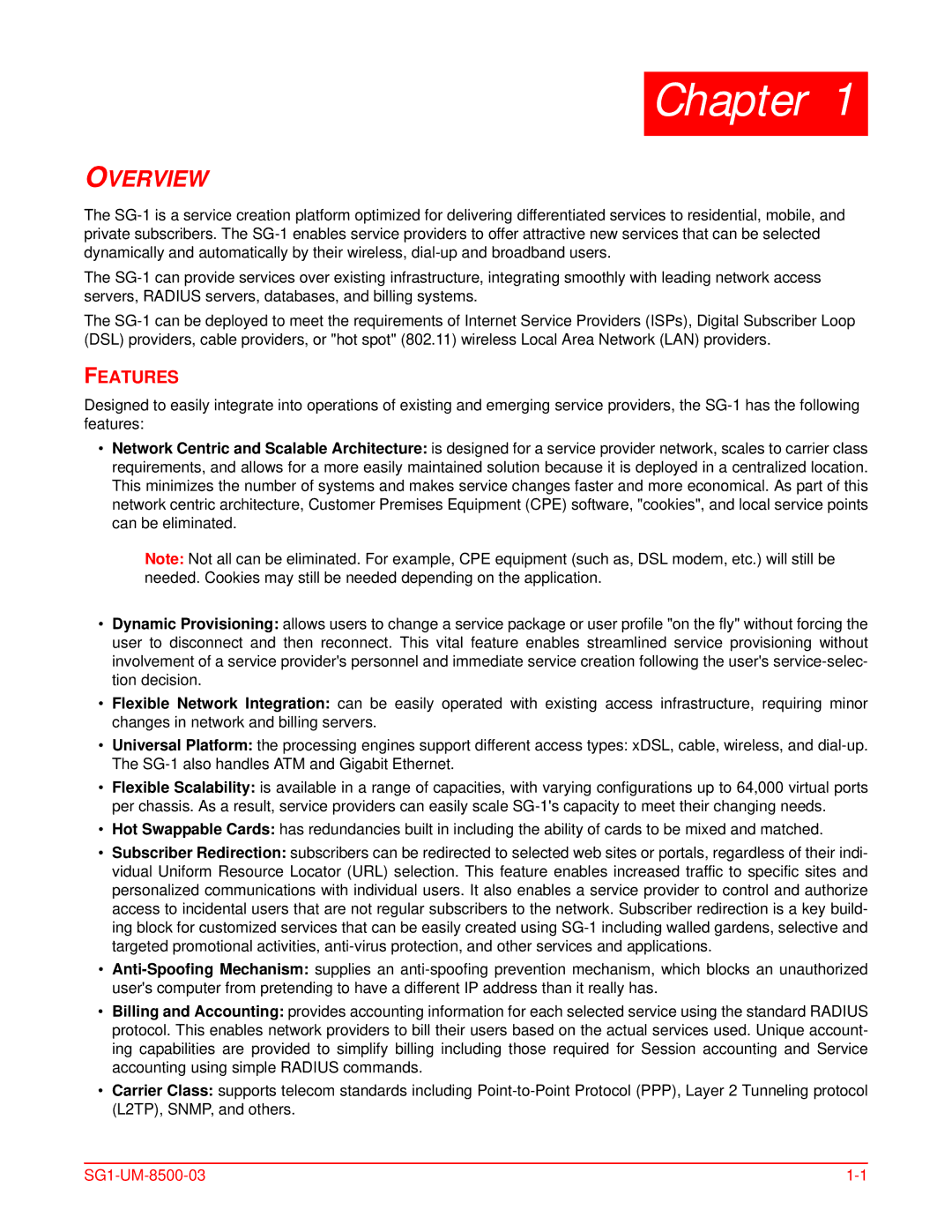
Chapter 1
OVERVIEW
The
The
The
FEATURES
Designed to easily integrate into operations of existing and emerging service providers, the
•Network Centric and Scalable Architecture: is designed for a service provider network, scales to carrier class requirements, and allows for a more easily maintained solution because it is deployed in a centralized location. This minimizes the number of systems and makes service changes faster and more economical. As part of this network centric architecture, Customer Premises Equipment (CPE) software, "cookies", and local service points can be eliminated.
Note: Not all can be eliminated. For example, CPE equipment (such as, DSL modem, etc.) will still be needed. Cookies may still be needed depending on the application.
•Dynamic Provisioning: allows users to change a service package or user profile "on the fly" without forcing the user to disconnect and then reconnect. This vital feature enables streamlined service provisioning without involvement of a service provider's personnel and immediate service creation following the user's
•Flexible Network Integration: can be easily operated with existing access infrastructure, requiring minor changes in network and billing servers.
•Universal Platform: the processing engines support different access types: xDSL, cable, wireless, and
•Flexible Scalability: is available in a range of capacities, with varying configurations up to 64,000 virtual ports per chassis. As a result, service providers can easily scale
•Hot Swappable Cards: has redundancies built in including the ability of cards to be mixed and matched.
•Subscriber Redirection: subscribers can be redirected to selected web sites or portals, regardless of their indi- vidual Uniform Resource Locator (URL) selection. This feature enables increased traffic to specific sites and personalized communications with individual users. It also enables a service provider to control and authorize access to incidental users that are not regular subscribers to the network. Subscriber redirection is a key build- ing block for customized services that can be easily created using
•
•Billing and Accounting: provides accounting information for each selected service using the standard RADIUS protocol. This enables network providers to bill their users based on the actual services used. Unique account- ing capabilities are provided to simplify billing including those required for Session accounting and Service accounting using simple RADIUS commands.
•Carrier Class: supports telecom standards including
